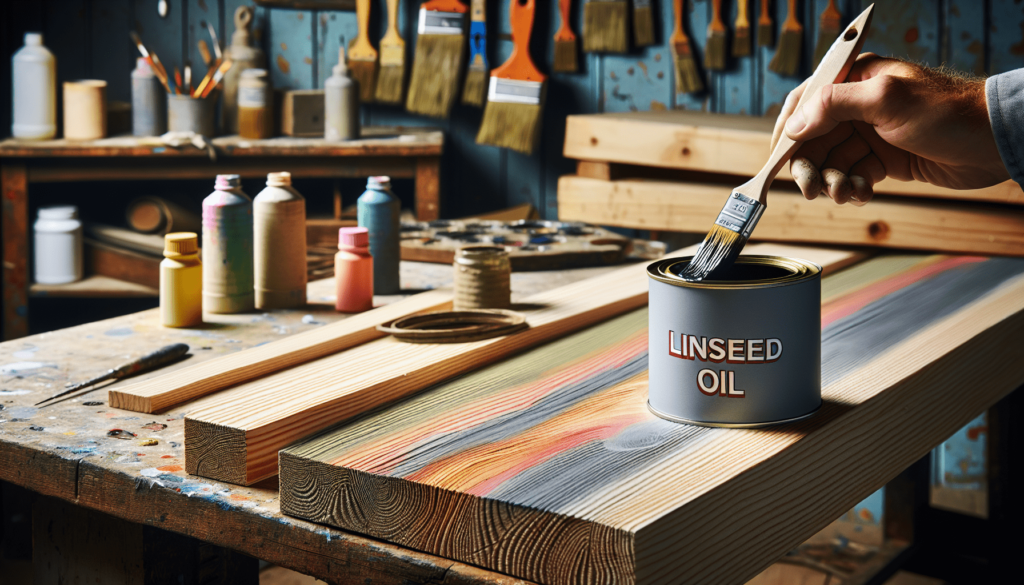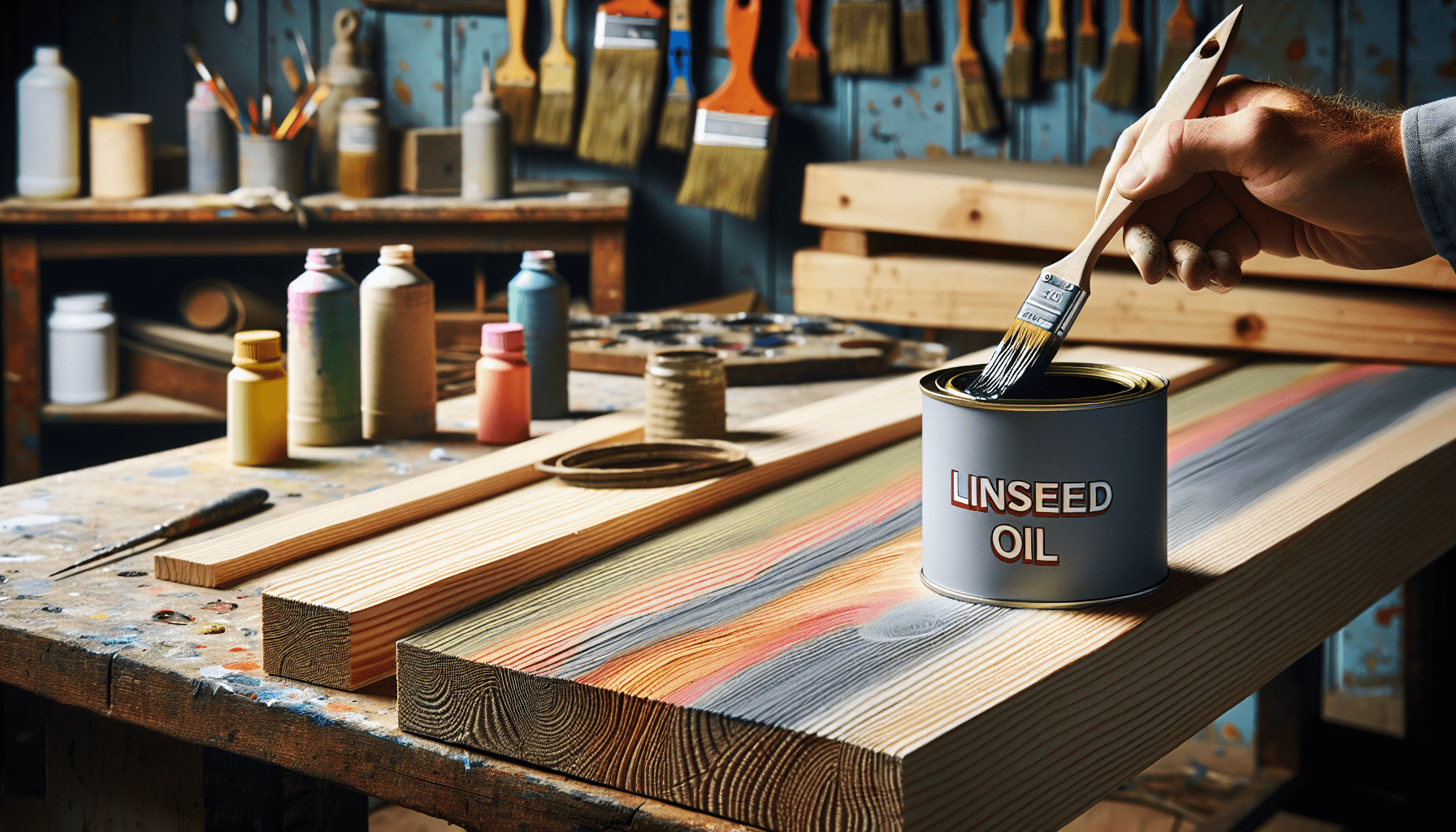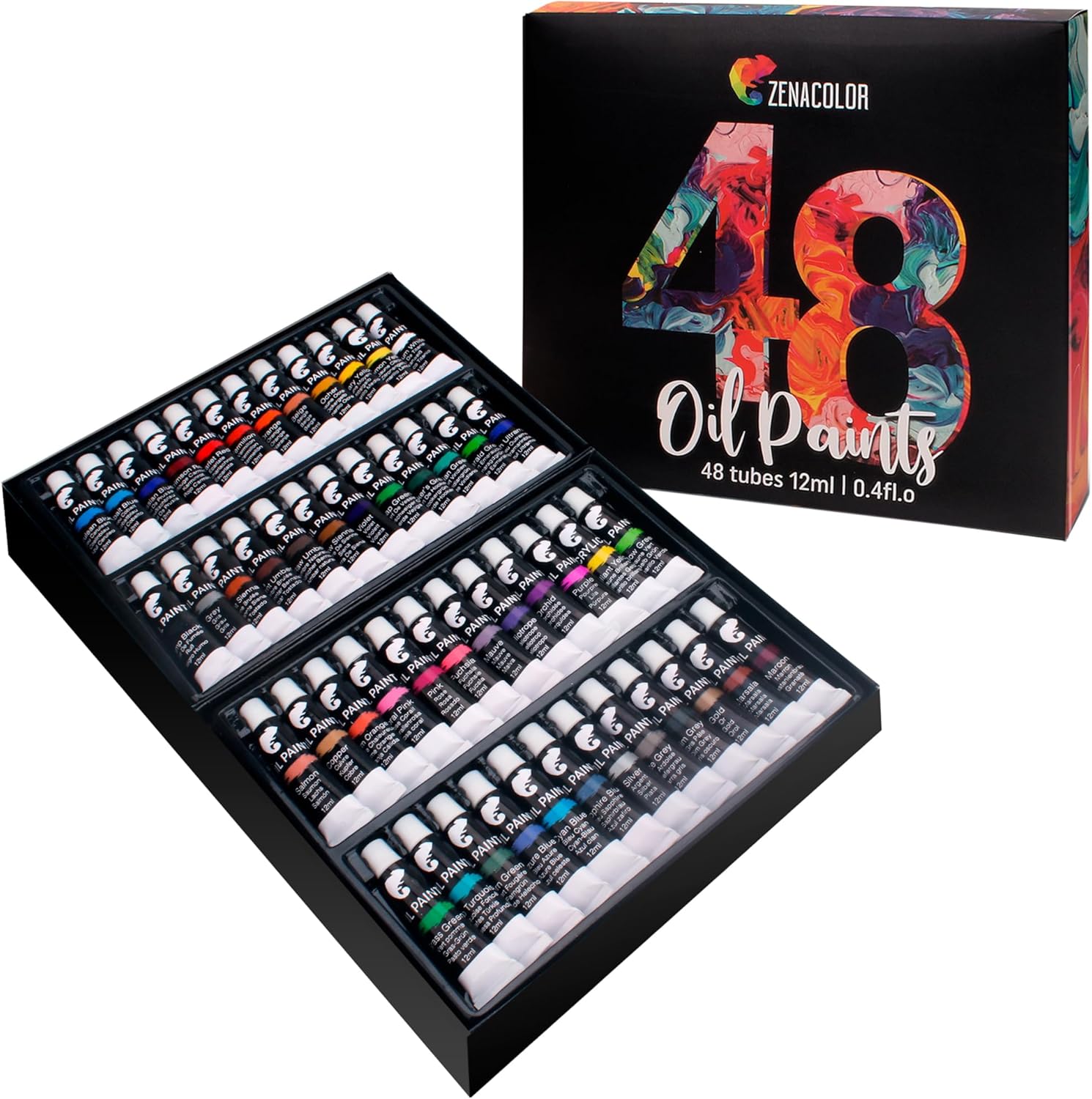In this thought-provoking discourse, ‘Can You paint over linseed oil‘, you’ll find a comprehensive examination regarding the possibility of painting over linseed oil. A strategic blend of research-based information, expert consultation, and practical guidelines have been shared to help you understand any potential benefits or drawbacks. This article provides a meticulously crafted guide with technical knowledge to satisfy any queries you may have about this oft-pondered question.

Understanding Linseed Oil
Linseed oil is derived from the seeds of the flax plant, an unassuming plant with blue flowers that boasts many uses in a variety of industries. This plant’s seeds are cold-pressed to create the oil, a golden liquid with a distinct, slightly nutty aroma.
What is Linseed Oil?
Known scientifically as Linum Usitatissimum, linseed oil is a rich, slow-drying liquid that can be used in various applications, from culinary to industrial purposes. In the world of art, linseed oil has played a pivotal role as a binding agent in paints due to its ideal consistency and drying capabilities.
Properties of Linseed Oil
Linseed oil is bestowed with unique properties that make it suitable for a whole host of practical applications. It is highly reactive to oxygen, enabling it to harden over time when exposed to air—a process known as polymerization. This property alone makes linseed oil ideal as a drying oil. Furthermore, the oil is rich in omega-3 fatty acids, lending to its health benefits in the diet. In terms of paint manufacture, the fatty acid content and oil’s consistency contribute to optimum paint flow, adherence, and dryness.
Common Uses of Linseed Oil
Linseed oil is used extensively in painting as it helps to bind pigment particles together to create smooth, vibrant, and durable paint. Apart from painting, it is also used in the manufacturing of linoleum flooring, and as a wood and concrete sealer due to its protective coating that hardens upon exposure to air. In addition, linseed oil also serves a purpose in the culinary world and in supplements for its impressive health-boosting qualities.
Preparing Linseed Oil for Painting
preparing linseed oil for painting is a key step in ensuring the longevity and aesthetics of your artwork. It involves understanding the characteristics of linseed oil and taking the right action at each point in the process.
Drying Time of Linseed Oil
Typically, linseed oil dries within 24 to 48 hours if applied in thin coatings. However, drying times can vary based on environmental factors like temperature, humidity, and air circulation, as well as the quantity of oil used. Understanding the drying time is essential to plan your painting work and ensure the oil is ready for the overlying paint application.
Curing Process
The curing process of linseed oil begins once it is exposed to air, initiating a chemical reaction that causes the oil to harden over time. This is not an immediate process and can take anywhere from weeks to months, depending on the thickness of the application and the environmental conditions.
Surface Preparation
In preparing a surface for painting with linseed oil, cleanliness and roughness are two critical factors. The surface must be free from dust, dirt, grime, old paint, or anything that might prevent good adhesion. If need be, employ the use of suitable solvents or detergents to clean the surface. Once clean, it may be necessary to sand the surface lightly to create a texture that the linseed oil can adhere to.
Considerations Before Painting Over Linseed Oil
Before you make the choice to paint over linseed oil, there are several factors you need to consider to ensure a successful project.
Compatibility with Paint Types
Not all paint types are compatible with linseed oil. You should ensure that the paint you plan on using is suitable for painting over linseed oil, as the two substances must chemically interact to ensure proper adhesion.
Testing Adhesion
Before proceeding with painting over the entire surface, a small-scale adhesion test should be conducted. Apply the paint on a small, discreet portion of the linseed oil-coated surface and let it dry. If the paint adheres well and shows no signs of peeling or cracking, it’s usually a good indication that you can proceed.
Priming the Surface
Application of primer serves to facilitate the adhesion of the paint to the linseed oil, and aids in improving the overall appearance of the finished painting by providing an even, uniform base for the paint.
Steps to Paint Over Linseed Oil
Clean the Surface
Ensuring the surface is clean and free of dust and contaminants is the prerequisite for a successful painting process. You may clean the surface with a lint-free cloth, using gentle detergents or solvents if necessary.
Sand the Surface
After cleaning the surface, you should perform a light sanding. This step creates a slightly rough texture, allowing the paint to adhere better to the linseed oil.
Apply a Primer
The next step is applying the right primer over the linseed oil-coated surface. It will help achieve a uniform color distribution of your final paint, and further aid in the adhesion and durability of the paint layer.
Painting Techniques
The painting techniques employed might vary depending on the medium used and the desired result. However, you should ensure that your painting strokes are even and consistent, overlapping the edges to ensure thorough coverage.

Common Issues and Solutions
Peeling or Flaking Paint
Peeling or flaking paint can be a problem if proper surface preparation is not undertaken. To solve this issue, the paint would need to be removed, the surface thoroughly cleaned and properly sanded before reapplying the paint.
Yellowing of Paint
Linseed oil is prone to yellowing over time, particularly in low-light conditions. If this is undesirable, consider using a different type of oil, or a paint that is resistant to yellowing.
Wrinkling or Bubbling
These imperfections can arise from applying overly thick coats of paint or painting in high humidity. To solve such problems, remove the wrinkled or bubbled paint, smooth the surface, and repaint. Remember to apply thin coats and allow enough drying time between different layers.
Solving Adhesion Problems
If the paint is not adhering well to the linseed oil, it could be due to an unclean or insufficiently roughened surface, or incompatibility between the oil and the paint. The solution would be to clean and sand the surface more thoroughly, or switch to a different type of paint that is compatible with linseed oil.
Recommended Paint Types for Painting Over Linseed Oil
Acrylic Paint
Acrylic paint, with its quick drying time and wide range of color options, works well over linseed oil as long as there is a proper bonding primer in between.
Latex Paint
Latex paint is the choice if you are looking for water-soluble paints. However, it necessitates a proper primer to adhere well to the linseed oil surface.
Oil-based Paint
Oil-based paint can adhere well to a linseed oil-treated surface. It might take a longer drying time compared to other types, but it tends to offer a longer-lasting, durable finish.
Water-based Paint
While water-based paints are easy to use and clean up, they may need a special bonding primer to adhere correctly to a linseed oil surface.
Maintaining and Protecting Linseed Oil Paintings
Curing and Drying Time
To maintain the beauty and longevity of your linseed oil paintings, observing the right curing and drying time is key. Never rush the drying process, or you risk damaging the integrity of your artwork.
Proper Cleaning and Care
Regular, proper cleaning and care of your linseed oil painting will ensure it stays vibrant and in good condition for a long time. Clean with a soft, dry cloth and specific oil painting cleaning solutions if needed.
Avoiding Direct Sunlight
To prevent yellowing or fading of your painting, avoid placing it in direct sunlight as UV rays can degrade the quality and color integrity of your artwork.
Applying Protective Coatings
Applying a protective coating or varnish can shield your painting from dust, dirt, scratches, and UV rays—thereby extending its lifespan.
Professional versus DIY Approach
Hiring a Professional
Hiring a professional painter or restorer with expertise in linseed oil paintings can be a great option, especially if you’re dealing with valuable or antique artwork. A professional has both the knowledge and the tools to ensure a high-quality job.
DIY Tips and Techniques
If you decide to follow the DIY route, always ensure you adhere to the steps outlined above. Patience, proper surface preparation, and using the right materials are key.
Potential Challenges
Whether you’re a DIY enthusiast or professional, painting over linseed oil comes with certain potential challenges such as yellowing over time or issues with paint adhesion. These challenges can be mitigated by conducting a thorough research before starting the project.
Frequently Asked Questions
Is it necessary to remove linseed oil before painting?
It’s not necessary to remove linseed oil before painting, but the surface needs to be clean, and a proper bonding primer should be used to ensure good adhesion.
Can linseed oil be used as a varnish?
Yes, linseed oil can be used as a varnish. Once it oxidizes, it provides a hard, protective, and glossy layer over the painted surface.
What are alternative options to linseed oil?
Alternative options to linseed oil include walnut oil, poppy seed oil, and safflower oil. However, each oil has its unique characteristics and drying times, so choose according to your specific needs.
Can linseed oil affect the longevity of paint?
Yes, linseed oil can affect the longevity of paint. Over time, linseed oil can yellow, which might change the color of your paint unless preventive measures are taken.
Can linseed oil paintings be restored?
Yes, linseed oil paintings can be restored. This process often involves cleaning, varnish removal, repairing damage, retouching the paint, and revarnishing.
Conclusion
Summary of Painting Over Linseed Oil
Painting over linseed oil can be accomplished successfully with proper knowledge about the properties of linseed oil and the right preparation steps. Using a suitable bonding primer, choosing the right paint, and carrying out necessary maintenance can enhance the longevity and beauty of your painting.
Final Thoughts on Linseed Oil as a Painting Medium
In conclusion, linseed oil is an exceptional medium in the world of painting, boasting a unique set of properties that contribute to the aesthetics, texture, and durability of artworks. With proper care and understanding, linseed oil could be the difference between an ordinary work of art and a masterpiece.



